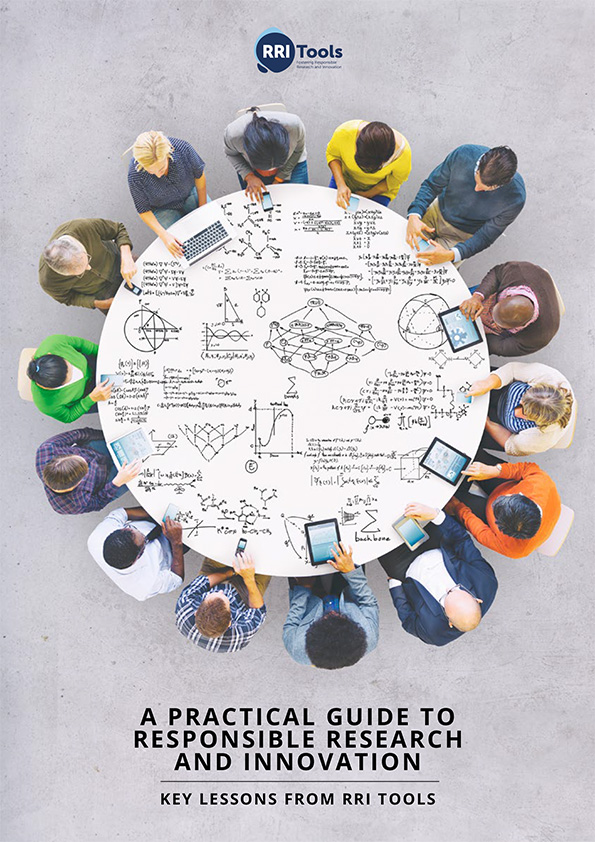A Practical guide to responsible research and innovation key lessons from RRI Tools
Tools, R. R. I. (2016)Milimétrica Producciones SL Spain.
Responsibility in science and technol- ogy is a hot topic among the policy- makers, researchers and innovators of Europe. Thanks to concerted efforts in recent years, more people now under- stand the changes that the European research and development system is going through. More citizens are in- volved in science through public en- gagement exercises. Natural scientists and social scientists have formed col- laborations. Users are leading innova- tion. Open access trends are changing the publishing system. Gender equality has rightly gained political momentum. Together, these efforts form a Europe- an-wide approach called Responsible Research and Innovation (RRI).
RRI is a cross-cutting issue within the Horizon 2020 funding scheme — the EU’s biggest ever Research and Inno- vation programme — and in line with Europe 2020 – the EU’s strategy for growth launched in 2010, including specific targets for research and devel- opment. The launch of RRI also follows the 2009 Lund Declaration (updated in 2015), which called upon European na- tions and institutions to focus research on the ‘grand challenges’ facing society, such as climate change, water shortag- es and ageing populations. RRI can also be found in Europe’s emerging policy of ‘Open Innovation, Open Science and Open to the World’ (explained on page 57). These three goals will frame re- search and innovation policy in the EU in years to come and are in many ways based on RRI principles.
To foster the development of RRI across Europe, in 2014 the Commission funded the RRI Tools project. This three-year pro- ject has involved over 25 different institu- tions across 30 countries and set out to create a Toolkit (page 33) – a universal point of call for policymakers, research- ers, industries, civil society organisations and educators on questions of RRI.
This quick guide explains what responsi- ble research and innovation really means and why it is so important for modern society. It explores RRI through the lens of the RRI Tools project and provides practical examples of its implementa- tion through a number of case studies (page 15) and an overview of the RRI Toolkit structure and main contents (page 33). A selection of ‘How To’ guidelines (page 37) explains how to apply RRI to spe- cific situations, including policy, research and business contexts. Finally, this guide provides five recommendations (page 51) that can help to make all types of research and innovation more responsible.
This document explains how RRI Tools has laid the groundwork for more re- sponsible, acceptable, and ethical sci- ence and technology development in Europe — in the pursuit of a better, more sustainable and more equitable world.


